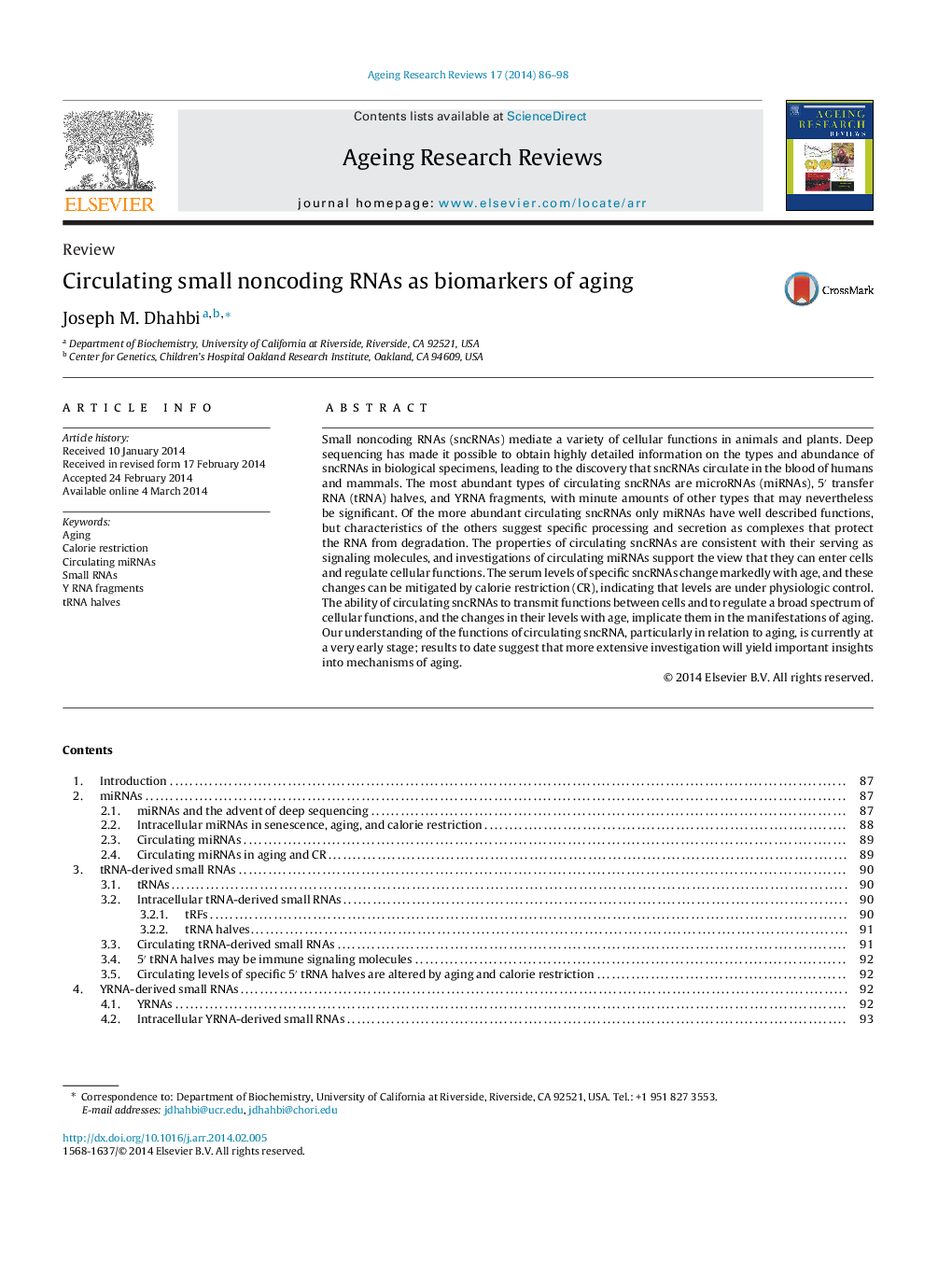| Article ID | Journal | Published Year | Pages | File Type |
|---|---|---|---|---|
| 1902263 | Ageing Research Reviews | 2014 | 13 Pages |
Small noncoding RNAs (sncRNAs) mediate a variety of cellular functions in animals and plants. Deep sequencing has made it possible to obtain highly detailed information on the types and abundance of sncRNAs in biological specimens, leading to the discovery that sncRNAs circulate in the blood of humans and mammals. The most abundant types of circulating sncRNAs are microRNAs (miRNAs), 5′ transfer RNA (tRNA) halves, and YRNA fragments, with minute amounts of other types that may nevertheless be significant. Of the more abundant circulating sncRNAs only miRNAs have well described functions, but characteristics of the others suggest specific processing and secretion as complexes that protect the RNA from degradation. The properties of circulating sncRNAs are consistent with their serving as signaling molecules, and investigations of circulating miRNAs support the view that they can enter cells and regulate cellular functions. The serum levels of specific sncRNAs change markedly with age, and these changes can be mitigated by calorie restriction (CR), indicating that levels are under physiologic control. The ability of circulating sncRNAs to transmit functions between cells and to regulate a broad spectrum of cellular functions, and the changes in their levels with age, implicate them in the manifestations of aging. Our understanding of the functions of circulating sncRNA, particularly in relation to aging, is currently at a very early stage; results to date suggest that more extensive investigation will yield important insights into mechanisms of aging.
